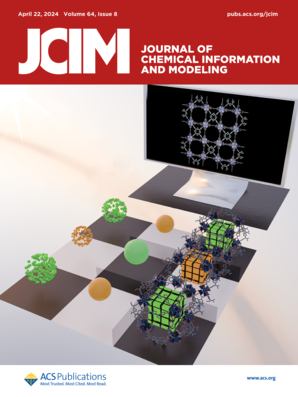Evolutionary Dynamics and Functional Differences in Clinically Relevant Pen β-Lactamases from Burkholderia spp.
IF 5.6
2区 化学
Q1 CHEMISTRY, MEDICINAL
引用次数: 0
Abstract
Antimicrobial resistance (AMR) is a global threat, with Burkholderia species contributing significantly to difficult-to-treat infections. The Pen family of β-lactamases are produced by all Burkholderia spp., and their mutation or overproduction leads to the resistance of β-lactam antibiotics. Here we investigate the dynamic differences among four Pen β-lactamases (PenA, PenI, PenL and PenP) using machine learning driven enhanced sampling molecular dynamics simulations, Markov State Models (MSMs), convolutional variational autoencoder-based deep learning (CVAE) and the BindSiteS-CNN model. In spite of sharing the same catalytic mechanisms, these enzymes exhibit distinct dynamic features due to low sequence identity, resulting in different substrate profiles and catalytic turnover. The BindSiteS-CNN model further reveals local active site dynamics, offering insights into the Pen β-lactamase evolutionary adaptation. Our findings reported here identify critical mutations and propose new hot spots affecting Pen β-lactamase flexibility and function, which can be used to fight emerging resistance in these enzymes.伯克氏菌中Pen β-内酰胺酶的进化动力学和功能差异
抗微生物药物耐药性(AMR)是一个全球性威胁,伯克霍尔德菌是造成难以治疗感染的重要原因。β-内酰胺酶的Pen家族由所有伯克霍尔德氏菌产生,它们的突变或过量生产导致β-内酰胺类抗生素的耐药性。在这里,我们使用机器学习驱动的增强采样分子动力学模拟、马尔可夫状态模型(mms)、基于卷积变分自编码器的深度学习(CVAE)和BindSiteS-CNN模型来研究四种Pen β-内酰胺酶(PenA、PenI、PenL和PenP)之间的动态差异。尽管具有相同的催化机制,但由于低序列同一性,这些酶表现出不同的动态特征,导致不同的底物谱和催化周转。BindSiteS-CNN模型进一步揭示了局部活性位点的动态,为Pen β-内酰胺酶的进化适应提供了见解。我们在此报告的研究结果确定了影响Pen β-内酰胺酶灵活性和功能的关键突变,并提出了新的热点,可用于对抗这些酶的新抗性。
本文章由计算机程序翻译,如有差异,请以英文原文为准。
求助全文
约1分钟内获得全文
求助全文
来源期刊
CiteScore
9.80
自引率
10.70%
发文量
529
审稿时长
1.4 months
期刊介绍:
The Journal of Chemical Information and Modeling publishes papers reporting new methodology and/or important applications in the fields of chemical informatics and molecular modeling. Specific topics include the representation and computer-based searching of chemical databases, molecular modeling, computer-aided molecular design of new materials, catalysts, or ligands, development of new computational methods or efficient algorithms for chemical software, and biopharmaceutical chemistry including analyses of biological activity and other issues related to drug discovery.
Astute chemists, computer scientists, and information specialists look to this monthly’s insightful research studies, programming innovations, and software reviews to keep current with advances in this integral, multidisciplinary field.
As a subscriber you’ll stay abreast of database search systems, use of graph theory in chemical problems, substructure search systems, pattern recognition and clustering, analysis of chemical and physical data, molecular modeling, graphics and natural language interfaces, bibliometric and citation analysis, and synthesis design and reactions databases.

 求助内容:
求助内容: 应助结果提醒方式:
应助结果提醒方式:


